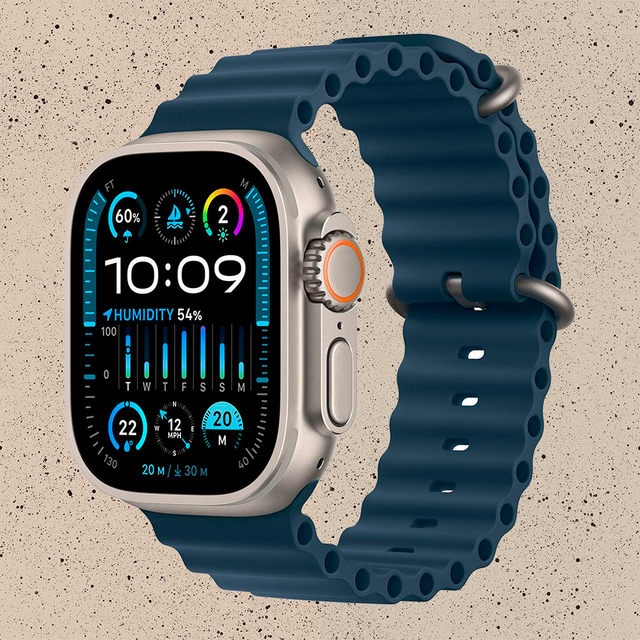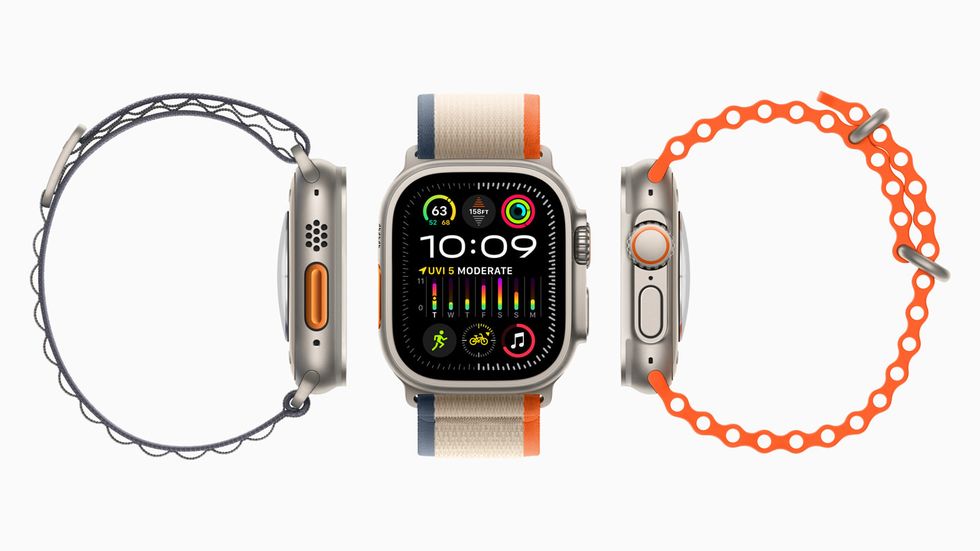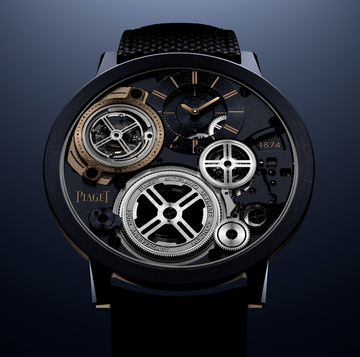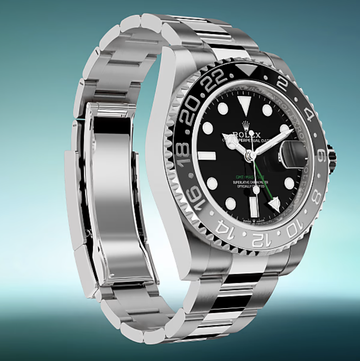There are many reasons not to buy the Apple Watch Ultra.
It's an adventure watch that can't compete with proper adventure watches. It costs twice as much as the Apple Watch 9 and almost as much as a Macbook Air. And it's about the same size and weight as an actual apple, with zero vitamin C.
And yet, by the only available metrics, it is going gangbusters.
Apple – not the fruit, but the $181-a-share Apple, a price up more than 30 per cent in recession-teetering 2023 alone – keeps tight-lipped shout sales. But based on surveys, plus waitlists of up to two months almost immediately after the Ultra launched last year, JP Morgan forecast it could rake in between $10bn and $38bn.
That confidence was all-but confirmed when the Apple Watch Ultra 2 landed in September, upgraded with – *squints* – a new double-tap function. And, er, slightly brighter screen.
Which begs the question: who is buying them?
According to a quick survey on our commute: skinny-suited estate agents brandishing Rapha water bottles; middle-aged newsagents chugging Monster Energy; guys checking their crypto wallets; guys talking loudly about their start-up's next funding round; guys on the school run brandishing Rapha water bottles. Is it as unscientific as it is unfair to assess this demographic purely by body shape? Of course it is. But by this unfair and unscientific assessment, Apple's Garmin-killer isn't just for amateur triathletes.
That's probably because for genuine adventurers, the Ultra's maps and dive metrics and workout tracking can't compete with proper sports watches, like the Garmin Fenix or Polar Vantage. But they're also the only real difference between the Ultra and the Apple Watch Series 9, at half the price (the 9 also doesn't feel like you've got an Apple Newton strapped to your wrist).
So why is the Ultra ubiquitous, at least around London's ritzier Tube stops?
"It might be more like a traditional watch than anyone has realised," says Chris Hall, publisher of watch newsletter The Fourth Wheel. "It has less to do with the exact specifications than a broader sense of being top-of-the-range." It's the same logic behind the solid-gold and Hermès Apple Watches. Despite inflated price tags, beneath the hood they're exactly the same as the less flashy versions (the gold version recently became officially obsolete, just seven years after launching for $17,000, about the same as an entry-level Calatrava. Categorically not one for the next generation).
Except neither variant has ever quite captured the imagination in the same way as the Ultra.
Perhaps it makes sense that a watch positioned on technological superiority would resonate more with a techy audience than something merely shiny. Think of it as a different spin on classic Geneva. "I think people are buying the Apple Watch Ultra with the heart, not the head," says Hall, "and that's a sign Apple might have learnt something from the luxury sector while it was busy teaching Switzerland a painful commercial lesson."
Whatever the underlying logic, expect to see even more of 'more is more'. "Apple has gone from offering one option in each product category to offering a wider range, and I think that in its way also mirrors the approach taken by traditional watchmakers," says Hall. That connects to the brand's wider healthcare play, originally spearheaded by Steve Jobs, in which the Apple Watch acts as a gateway to an ecosystem encompassing everything from instant blood glucose monitoring to hearing augmentation and AI diagnosis. Once you're in, it's hard to unplug.
The Ultra isn't Apple's attempt to make a better adventure watch, then; it's just a smarter smartwatch, a category that for many is represented almost exclusively by that bitten apple logo. As long as people are willing to stump up for the biggest and best, the Ultra just needs to get incrementally bigger and better.














